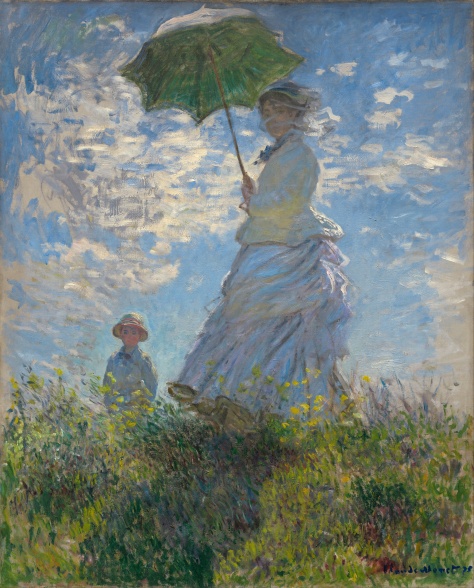 By: Delia Eccli
By: Delia Eccli
Claude Monet was born in 1840 and died in 1926 and he was a French artist. He is a famous French landscape painter, and advocate of the Impressionist movement in art. One of the characteristics in the Impressionism movement in art was the en plein aire, or painting outdoors. The Impressionistic works like these by Monet focuses on what the eye perceives by looking at colors of objects in varying degrees of sunlight. Monet painted with oil paints on canvas, with only white, red, blue, and green colors. The shadows are mixed colors, usually dark violets, and no black was ever used in his paintings. Monet believed that if the lights and darks of nature are painted, the painting would then take shape.
One of his works is Woman with a Parasol-Madame Monet and Her Son. The painting belongs to a series of paintings he produced during the summers of 1875 and 1876. The landscape background in the series of paintings depicts the garden surrounding Monet’s second home in Argenteuil. Monet’s wife Camille served as his model for Woman with a Parasol along with his son, Jean, who was eight years old at the time of the painting.
It shows a beautiful landscape where his wife Camille stands on a hill dressed in a voluminous white dress and a veiled hat, carrying a parasol and behind her in the background appears his son Jean. We can also see a movement in the air.
To capture the fleeting effects of the sunlight Monet uses shades of dark and light colors to indicate shadows and sunlit areas and this is characteristic for his style. The grass is created with comma-like strokes, and quick, strong, wispy strokes of varying size.
The way in which he mixes colors, creating shadows, and the brushstroke creating fluidity, make the scene realistic. Although Monet created this painting as an experiment, and for his own practice, it is one of his most famous paintings. It is currently in the National Gallery of Art, in Washington D.C.